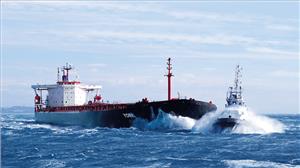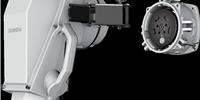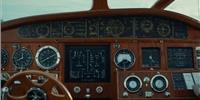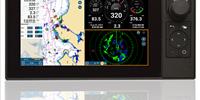A group of maritime industry and technology experts in Germany is working on a project to unlock remote control capabilities for safer and more efficient harbor tug operations.
Backed by the German Federal Ministry for Economic Affairs and Energy (BMWi), the project is being led by Voith in partnership with the Hamburg University of Technology, the Fraunhofer Center for Maritime Logistics and Services, the Federal Office for Hydraulic Engineering, winch and crane manufacturer McGregor, the Marine Training Center (MTC) Hamburg and communication specialists from MediaMobil.
Voith said it will present the FernSAMS technology as part of a live-streamed maneuver simulation at the 12th National Maritime Conference taking place in Rostock on May 10-11. The German acronym FernSAMS (Ferngesteuerte Schlepper bei An- und Ablegemanövern großer Schiffe) refers to the remote-controlled tugs used during mooring and casting-off maneuvers of large ships.
"Standardized, automated tugboat assistance will significantly reduce costs for shipping companies and port operators and increase the speed of individual ship maneuvers," said Dr. Dirk Jürgens, Vice President Research and Development at Voith Turbo Marine and Project Manager for FernSAMS.
Voith said remotely operated tugs offer opportunities for reduced construction and operation costs as most of the vessels would not need common rooms or sanitary facilities for the crew, and noise insulation and even the bridge could also be eliminated. This reduces the weight of these floating powerhouses, which makes them even more maneuverable and reduces energy consumption. The concept also opens up new options for the design of the remote-controlled vessels; for example, there is no longer a need to make provision for a deck house to accommodate towing gear.
The second objective of FernSAMS is to improve crew safety. Voith noted, for example, that tow lines are commonly handed over manually, requiring the tug operating at the front of the ship to navigate directly in front of the bow of the moving freighter. Harbor pilots on the bridge of the vessels, which are often well in excess of 300 meters long and 45 meters wide, coordinate these maneuvers with the tugboat captains. During this process, the tow lines are subjected to immense forces, which can reach more than 100 metric tons during dynamic maneuvers. With remote-controlled tugs, all critical maneuvers and operations can be controlled from a safe distance, minimizing the risk of accidents for employees.
The FernSAMS partners do not envisage a completely autonomous operation. "The basic principle is to replace one or several tugs in a team with unmanned vessels. The remote control is done on board one of the boats involved," Jürgens said.
For this to function properly in real time, there needs to be a fast and reliable data connection between all participants, even if there is the huge mass of a ship between tug and (remote) helmsman. "The 5G mobile communications standard is a potential transmission solution. Satellite communication is also a likely option to serve as a safety backup," Jürgens said.






